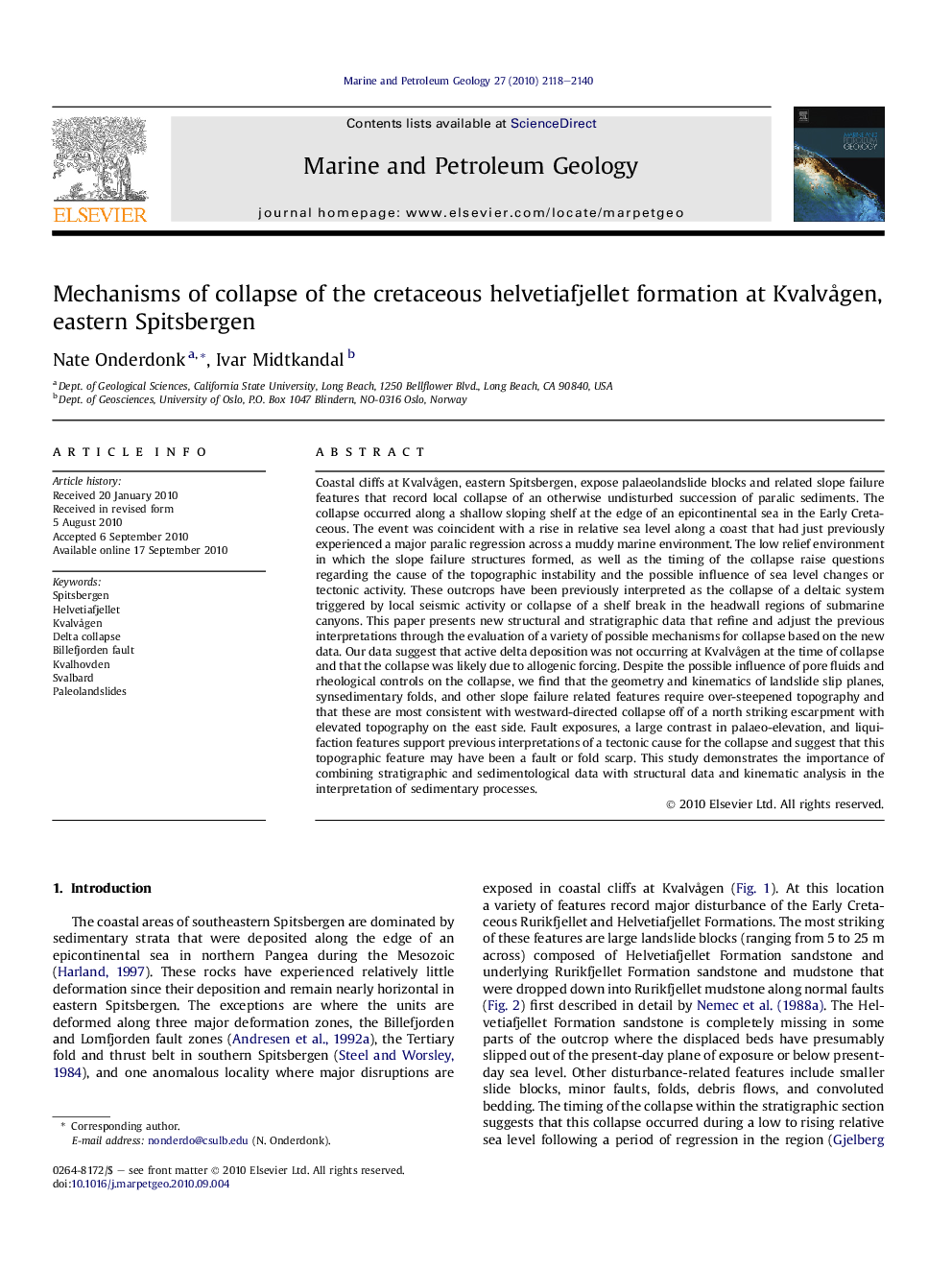| کد مقاله | کد نشریه | سال انتشار | مقاله انگلیسی | نسخه تمام متن |
|---|---|---|---|---|
| 4696399 | 1351673 | 2010 | 23 صفحه PDF | دانلود رایگان |

Coastal cliffs at Kvalvågen, eastern Spitsbergen, expose palaeolandslide blocks and related slope failure features that record local collapse of an otherwise undisturbed succession of paralic sediments. The collapse occurred along a shallow sloping shelf at the edge of an epicontinental sea in the Early Cretaceous. The event was coincident with a rise in relative sea level along a coast that had just previously experienced a major paralic regression across a muddy marine environment. The low relief environment in which the slope failure structures formed, as well as the timing of the collapse raise questions regarding the cause of the topographic instability and the possible influence of sea level changes or tectonic activity. These outcrops have been previously interpreted as the collapse of a deltaic system triggered by local seismic activity or collapse of a shelf break in the headwall regions of submarine canyons. This paper presents new structural and stratigraphic data that refine and adjust the previous interpretations through the evaluation of a variety of possible mechanisms for collapse based on the new data. Our data suggest that active delta deposition was not occurring at Kvalvågen at the time of collapse and that the collapse was likely due to allogenic forcing. Despite the possible influence of pore fluids and rheological controls on the collapse, we find that the geometry and kinematics of landslide slip planes, synsedimentary folds, and other slope failure related features require over-steepened topography and that these are most consistent with westward-directed collapse off of a north striking escarpment with elevated topography on the east side. Fault exposures, a large contrast in palaeo-elevation, and liquifaction features support previous interpretations of a tectonic cause for the collapse and suggest that this topographic feature may have been a fault or fold scarp. This study demonstrates the importance of combining stratigraphic and sedimentological data with structural data and kinematic analysis in the interpretation of sedimentary processes.
Journal: Marine and Petroleum Geology - Volume 27, Issue 10, December 2010, Pages 2118–2140